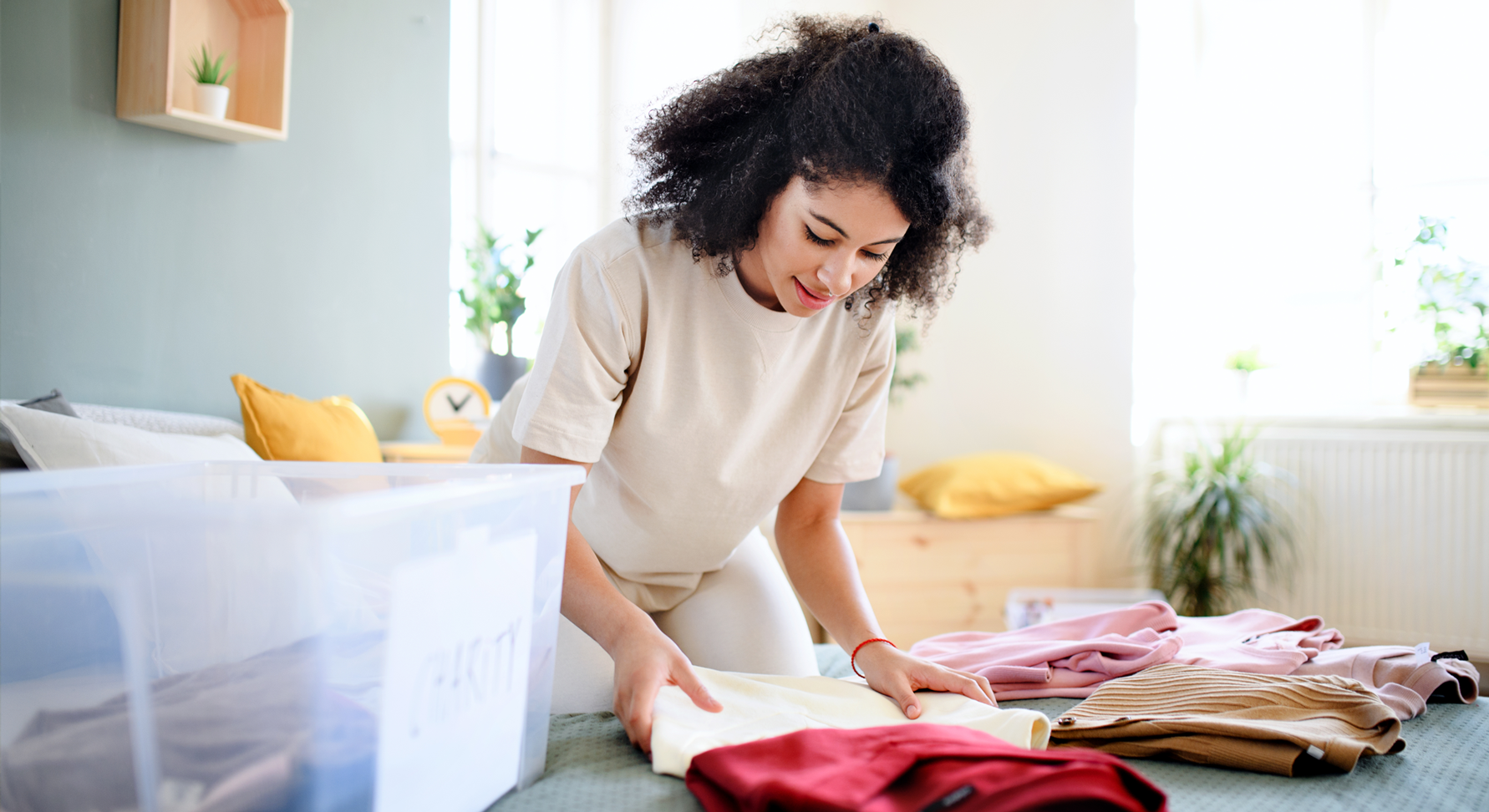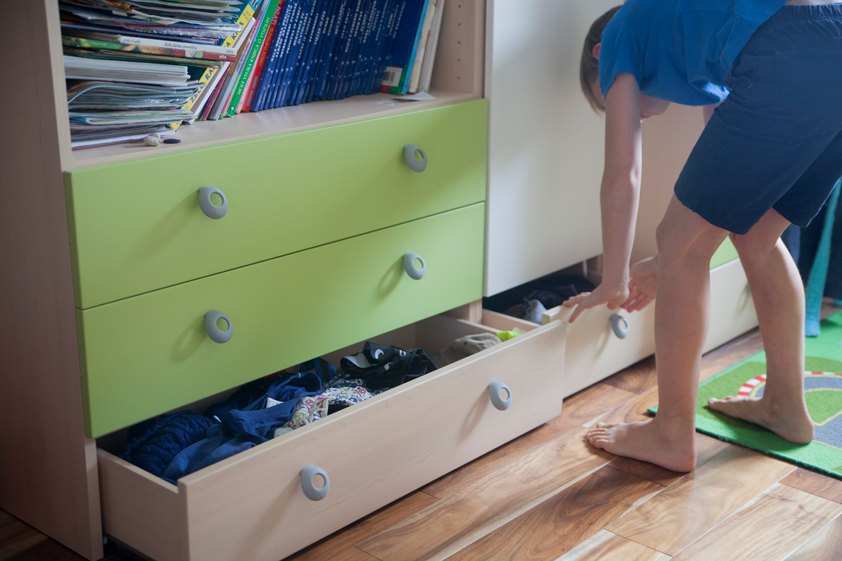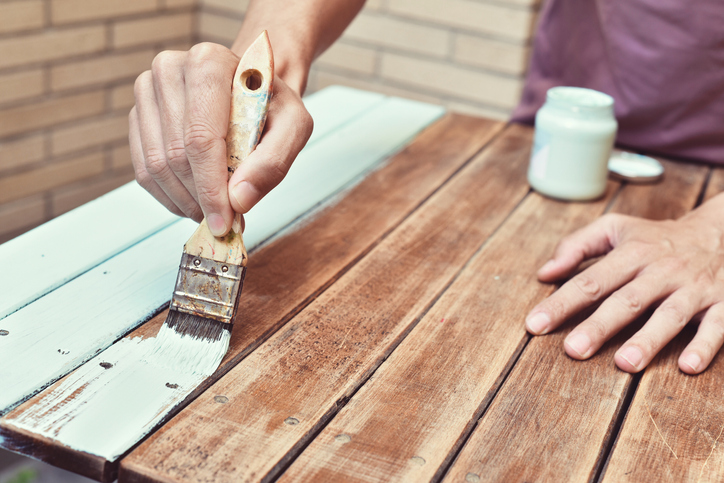
How to declutter your home sustainably
Hands up if you’ve recently asked one of your worldly possessions if it ‘sparks joy’ in your life.
You have? Marie Kondo and her Netflix series have a lot to answer for, not least that we’re all now talking to inanimate objects throughout our homes.
Decluttering is very much on-trend right now, with ‘The art of tidying up’ giving a new lease of life to the term spring clean.
When you’ve emptied the contents of your wardrobe over your bed, or pulled out all the kitchen drawers, it can be very tempting to reach for the black bin bags and chuck everything out with the general waste. But sending items to landfill should always be a last resort if they can’t be repaired, reused or recycled.
Just because there’s something that we no longer want or have a need for it doesn’t mean that it has reached the end of its useful life.
With a little bit of preparation and planning you can declutter your home in a more sustainable way. Here are some of our top tips…
Top tip…commit to using up what you have, such as bottles of shampoo or perfume, rather than throwing them away.

Decluttering sustainably – it’s all in the preparation
If you haven’t got a plan in place it is easy to feel overwhelmed when you’re left with a big pile of stuff. It can then be tempting to just run straight to the recycling centre, or even worse still just put it in the bin. With a little bit of preparation, you can have a guilt-free declutter.
Before you start, put a sorting system in place so you know where to place items as you go. Consider the following:
- Items you are keeping
- Items to be repaired
- Items that can be reused and can be passed on to friends and family, charity shops or even sell online or at a car boot sale. Some charities will even collect items directly from your home
- Items that can be recycled – these can then be gathered and taken to your household recycling centre
Break it down
If it still feels like a mind-boggling task, then break it down into more manageable areas – pick a drawer or cupboard to start your decluttering journey and you’ll soon find yourself gaining the momentum to move on to larger spaces.
Be realistic about the amount of time it’s going to take, it can take a while to sort through a whole house, so maybe focus on one room at a time. When you are planning make sure you also factor in time for getting rid of items.
Can it be repaired?
Can you fix it or upcycle it to keep it in use? Repair doesn’t need to be that complicated. There are some basic quick fixes that are easy to do from repairing your clothes to upcycling your furniture.
Ifixit has great resources on how to fix things with step by step instructions for those who are feeling a bit more adventurous.

Can it be used elsewhere?
If your items are in good working order, then they can be reused either by donating to a local charity shop or using the Circular Communities Reuse Tool for larger items.
Just check with the charity shop that it does accept the items – otherwise it might cost them time and money to dispose of.
You could sell your pre-loved items - either online or at a car boot sale - to earn a bit of cash or give it away to someone in your local community through sites like Freecycle, Freegle and Gumtree.
Would one of your friends or family make use of it? Just make sure they don’t feel pressured into taking it off your hands, as you could just be creating clutter for someone else.
Recycling
If something can’t be repaired or reused, then you should check to see if it can be recycled.
The best way to do this is to check what you can recycle in your area on your local council’s website.
Before taking it to your local recycling centre or recycling bank, separate items out into different types for example books, textiles and electricals.
Staying clutter-free
Post-declutter you’ll probably be feeling pretty chuffed. And you should be. All your hard work has paid off, your home is feeling free of clutter and you’ve even managed to breathe new life into some once-forgotten items. But how do you keep it that way?
We’ve all been there, our inner bargain hunter shouting ‘at that price, why not?’ but it’s not a bargain if it’s left on the shelf to gather dust or crammed into a wardrobe already bursting at the seams. You’ll just forget it’s in there.
Once you’ve decluttered, you’ll value what you have more and be able to take advantage of it so make sure the clutter doesn’t creep back in by focusing on buying what you need and what you love.
Buy less and refuse items you don’t want, like goodie bags from events, or opt-out of receiving junk mail. Ask yourself if you really need it and avoid offers that encourage you to buy more.
Like us on Facebook for more tips on how to reduce, reuse and recycle.
You can also download ‘The Big Declutter’ for a room-by-room guide on how to declutter your home while having less of an impact on the planet.
Once you’ve decluttered, you’ll value what you have more and be able to take advantage of it so make sure the clutter doesn’t creep back in by focusing on buying what you need and what you love.
What can you do?
Put a sorting system in place so you know what you are keeping, repairing, reusing or recycling.
Break your declutter down into manageable areas.
Look for things that you can fix or upcycle to keep them in use.
Stuff that’s in good working condition can be donated or sold on.
If something can’t be repaired or reused, check if it can be recycled.
Stay clutter free by focusing on only buying what you need or love and turning down things that don’t.
